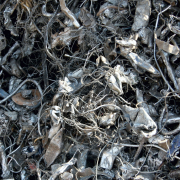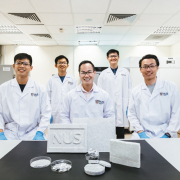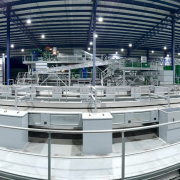Sorting of Aluminum Alloys
The Italian corporation SGM Magnetics, one of the leaders in X-ray sorting technologies for metal recyclers including X-ray Transmission and X-ray Fluorescence is now launching its latest proprietary X-ray technology called XRF-BS. This technology consists in the combination of X-ray Fluorescence with X-ray Back Scattering presented as an alternative to LIBS (Laser Induced Breakdown Spectroscopy) for the sorting of aluminum alloys.
X-ray Back Scattering is an underlying phenomenon to Fluorescence and is usually considered as a rumor in the XRF spectrographic sorting analysis as, instead of being represented by a few high intensity peaks of specific energies, it is characterized by a continuous distribution of low intensity photons, the distribution profiles of which are characteristic of the presence of the various metals. XRF-BS can identify metal concentrations down to 0,2 percent which makes it a performing solution for sorting the different aluminum alloys and a competitive alternative to LIBS. The main benefits of XRF-BS vs LIBS are:
Reading penetration
Unlike X-ray transmission, which performs a readthrough analysis, both XRF-BS and LIBS perform a “surface” analysis. This means that the accuracy of both the LIBS and XRF-BS readings is impacted by the surface condition (dirt, painting, oxidation,…) of the material to be analyzed. “Reading” accuracy depends on the thickness of the “coating” and on the penetration of the reading.
XRF-BS “penetration” is typically around 100-200 microns while LIBS penetration is usually around 10 to 20 microns depending on the level of energy used for the laser source and the type of laser lens.
The typical thickness of painting on aluminum profiles is over 40 microns which is less than XRF-BS penetration and more than LIBS’ one.
Continuous vs discontinuous reading
XRF-BS performs a continuous reading while LIBS reading is discontinuous making it a “sampling” analysis.
LIBS is, for sure, good enough on tailings of aluminum sheets at stamping plants. In this case, the surface of the material is always clean and every piece is homogenous in composition, meaning that a shallow surface sampling analysis provides an accurate analysis of the whole piece. Last but not least, in such an application, you know in advance the limited possible different types of aluminum the technology is processing which helps the sorting.
In case of aluminum scrap, the situation is different and the deeper and continuous analysis of the XRF-BS is a plus.
Reading distance
Reading distance is a sensitive element for both XRF-BS and LIBS but it is easier to control in the case of XRF-BS.
With XRF-BS, the reading must take place within a certain distance from the surface of the piece but this is no problem as the reading is continuous and material is analyzed from underneath while in free fall. With LIBS, there is the additional constraint of making sure to stay within the focal length of the laser that is typically around 20mm which is not a lot when you consider possible long and misshaped aluminum profiles. Focal length can be increased but that goes against the energy and penetration depth.
(Published in GLOBAL RECYCLING Magazine 1/2024, Page 38 -Advertorial-, Photo: SGM Magnetics)










